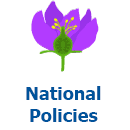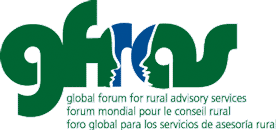 Every country has developed, formulated, and decreed national policies related to rural advisory services. Find some examples here. If you are looking for a national policy from a specific country, please use the search function, selecting the category “National policies” and the tag for the country.
Every country has developed, formulated, and decreed national policies related to rural advisory services. Find some examples here. If you are looking for a national policy from a specific country, please use the search function, selecting the category “National policies” and the tag for the country.

Recommendations (20)
Smallholder Agriculture’s Contribution to Better Nutrition
Written by Ingrid OliveiraSmallholder agriculture can potentially affect food security and nutrition through the following pathways:
- Making food available through production;
- Reducing the real cost of food by increasing the supply of food. The composition of production also matters, since this affects the availability and prices of different foods with their varying nutrients;
- Generating incomes for farmers and those working the land as labourers, that allow access to food; and through
- Providing incomes to others in the rural economy from linkages in production and consumption that create additional activity and jobs.
The Role of Agriculture: Producing Food to Nourish People?
Written by Ingrid OliveiraThis factsheet is the second publication by generation nutrition looking at the differentways of preventing child undernutrition. It explains howagricultural programmes in developing countries can have a bigger impact in reducing undernutrition and, in doing so, fulfil one of the sectors main roles: to provide people with the nutritious food they need for a healthy and productive life.
Integrating Agriculture and Nutrition Education for Improved Young Child Nutrition
Written by Ingrid OliveiraGiven that the emphasis on enhancing agriculture’s impact on nutrition is relatively new, some key knowledge gaps exist on the relative mix of components and the extent of their integration that make implementation most effective. The institutional aspects of programme delivery, technical capacities and inter-sectoral collaboration required are also not well understood. Questions remain regarding the design and implementation of nutrition education for behaviour change and what makes such interventions work, how they can be sustained and scaled up, and at what cost? Much work remains to be done to know exactly what to do and how to do it, and to determine where the greatest opportunities are. In other words, it is important to know which type of programmes deliver the greatest benefit to target beneficiaries and are likely to have the greatest impact.
Nutrition-sensitive Agriculture Programming
Written by Ingrid OliveiraThe guidance is designed for non-nutrition specialists. It helps agriculturalists avoid unintentionally harming the nutritional status of target households and boost nutrition whenever possible. It includes:
Nutrition Sensitivity: How Agriculture Can Improve Child Nutrition
Written by Ingrid OliveiraThere is broad consensus on the need to scale up nutrition-specific interventions– ie, direct nutrition interventions such as promoting exclusive breastfeeding, infant and young child feeding, or greater coverage of vitamin A. But the limited evidence base on nutrition-sensitive approaches makes it difficult for agriculture, social protection and other relevant policies to take account of their potential impact on nutrition. There is an urgent need to strengthen the nutritional component of many agricultural policies and investment plans.2 A role of agricultural policy is to promote economic development and provide nutrition for a country’s population. CAADP plans should include a nutrition strategic objective supported by clearly defined indicators. The indicators should be differentiated by gender and age group (adult and child).
Nutrition Core Competences for Mid-Level Animal and Plant Science Disciplines at Agriculture Technical Vocational Education and Training Colleges in Ethiopia
Written by Ingrid OliveiraEthiopio is one of the 36 countries with the highest burden of malnutrition in the world. In recent years, the country has improved the underweight and stunting trends in under-five children, for which rates of stunting and under-weight decreased by 14% and 12% respectively, between 2000 and 2011; while prevalence of vasting did not show significant progress over the past 11 years. Currently, more then 4 out of 10 under-five children are still chronically malnutritioned, and nutrition has become one of the major national agenda items that need multi-sectoral coordination. The Empowering New Generations to Improve Nutrition and Economic Opportunities (EGNE) project iw working to strengthen mulit-sector coordination and build capacity at the policy and implementation levels, as well as at the pre-service education and training level.
Reducing the Gender Gap in Agricultural Extension and Advisory Services: How to Find the Best Fit for Men and Women Farmers
Written by Ingrid OliveiraAgriculture is a fundamental driver of economic growth and poverty reduction for many developing countries. Past efforts at revitalizing the agriculture sector have failed in part because they overlooked the role of women and the negative effects of gender inequalities on productivity. According to The State of Food and Agriculture (FAO, 2011), “Women comprise, on average, 43% of the agricultural labor force in developing countries, ranging from 20% in Latin America to 50% in Eastern Asia and Sub-Saharan Africa”. Reducing gender inequalities in access to productive resources and services could increase yields on women’s farms by 20–30%, which could raise agricultural output in developing countries by 2.5–4% (FAO, 2011).
Mainstreaming Agrobiodiversity in Sustainable Food Systems:
Written by Ingrid OliveiraIn today’s complex and interconnected world, what we eat and how we produce it are inextricably bound together. A focus on increasing food production without due concern for the environment is causing severe land and water degradation. A focus on addressing hunger without a focus on good nutrition is causing an epidemic of non-communicable diseases. A focus on increasing yields in a few staple food crops is contributing to loss of crop diversity. What we need is to be able to produce a wide variety of nutritious foods while having minimal impact on the environment – a sustainable food system. The Sustainable Development Goals, signed by 193 world leaders in 2015, recognize that these challenges are interconnected and multidimensional.
Competency Framework for Integrating Gender and Nutrition within Agricultural Extension Services
Written by Ingrid OliveiraThe INGENAES capacity development activities are intended to build gender-responsive, nutrition-sensitive skills among organizations providing agricultural extension services (AES). The objectives are to enable these organizations to identify and equip staff with the appropriate skills to deliver services that lead to improved gender- and nutrition-related outcomes; and to establish a set of gender-responsive, nutrition-sensitive AES practices that substantially and effectively strengthen gender equity and improve nutrition outcomes.
What types of skills, attitudes, and behaviors (SAB)1 are necessary to enable institutions to deliver gender- and nutrition-informed services?
The SABs needed at the individual level require a supportive environment that enables individual extension workers to employ the SABs. Such a supportive environment consists of technically correct training, supportive supervision, and appropriate incentives to encourage SAB deployment by staff.
Food-based Dietary Guidelines: An Overview
Written by Ingrid OliveiraMen and women of all ages need to consume a variety of foods to support growth, provide strength, improve cognitive function, and reduce susceptibility to chronic diseases, illnesses, and infection (Smolin & Grosvenor, 2016; WHO, 2014). In an effort to help address the nutrition concerns of populations, Food-Based Dietary Guidelines (FBDG) have been established in several countries around the world (FAO, 2016). These FBDG are created to inform the public about consuming more nutritious foods and living a healthier life (FAO, 2016). Additionally, countries use FBDGs not only to guide nutrition education programs but also to guide policies and programs in various sectors like agriculture, education and social protection. The purpose of this technical note is to help health professionals and non-health professionals understand basic facts about the FBDG such as origins, purpose, characteristics, and potential challenges when developing and implementing these FBDG with target communities.
More...
Methods for Teaching and Evaluating Food-Based Dietary Guidelines
Written by Ingrid OliveiraFood-Based Dietary Guidelines (FBDG) are established in several countries around the world to address the nutrition concerns of populations (FAO, 2016). FBDGs inform the public about consuming nutritious foods and living a healthy life (FAO, 2016). However, the methods and strategies to educate the public, especially those living in rural communities, and their evaluation are limited. Therefore, the purpose of this technical note is to two-fold: 1) to assist health professionals and non-health professionals educate the public about understanding and using FBDGs, and 2) to provide organizations an overview of methods to evaluate these teaching strategies for their effectiveness in changing community members’ dietary behaviors.
Analysis of Indicators and Measurement Tools Used in Zambia to Assess Impact of Agricultural Extension Programs on Gender Equity and Nutrition Outcomes
Written by Ingrid OliveiraIn Zambia, investment in agricultural extension with a focus on gender equity and nutrition outcomes has been increasing, and in the last decade, several organizations have replicated projects in different geographical areas. However, with persistent high prevalence of malnutrition and micronutrient deficiencies still being recorded especially among children below the age of five, it is either these initiatives have little impact on reducing malnutrition, they are not sufficient, the correct programs are not being implemented, and/or the methods used to measure the impact may be inappropriate.
Conceptualizing the Contribution of Agricultural Extension Services to Nutrition
Written by Ingrid OliveiraThere is growing global interest in better leveraging Agricultural Extension Services (AES) as a foundation for food and nutrition security. Pluralistic AES (defined in Box 1) consist of rural, agriculturally focused extension and advisory services implemented by public, NGO, and private-sector entities. They reach millions of farmers and represent largely untapped potential for influencing production and consumption decisions which could, in turn, affect the health and nutrition status of populations, particularly in rural areas. Their specific contributions, however, are only beginning to be articulated and evaluated.
This discussion paper addresses the specific contribution that AES can make to food and nutrition security in a way that is consistent with AES’s primary functions. It is particularly focused on the scope of the INGENAES project and the context of the Feed the Future countries within which the project operates.
This note presents lessons learned on integrated homestead food production (IHFP) emerging from projects and programmes implemented by IFAD and other development actors around the world. It aims to complement the How To Do Note (HTDN) on the same subject by illustrating success stories and good practices through case studies. The emerging lessons are distilled and synthesized in order to provide concrete models that could inform and ideally be scaled up in the design and implementation of future IFAD-funded interventions.

